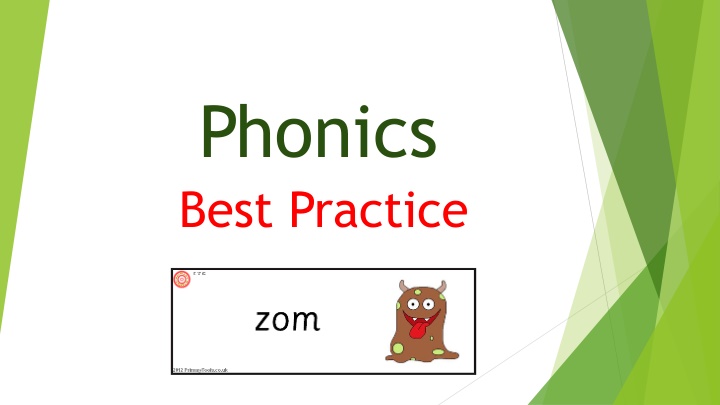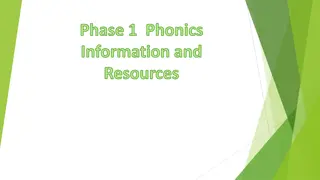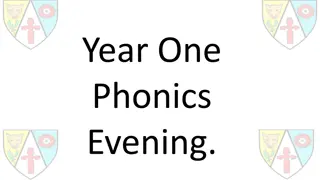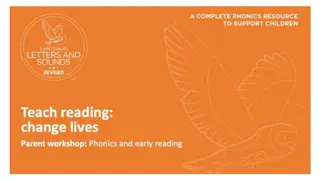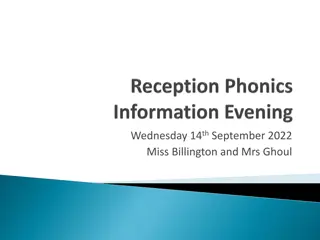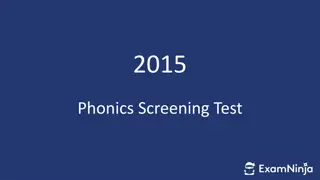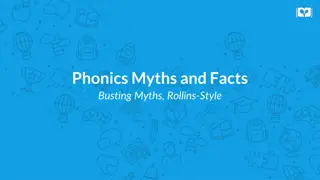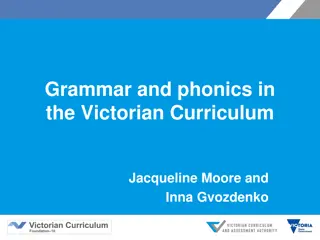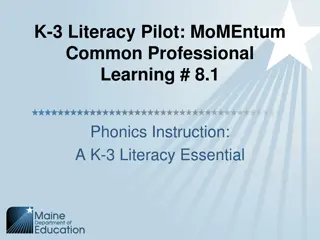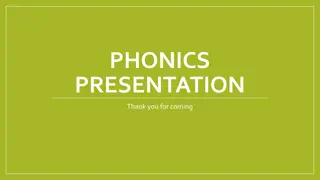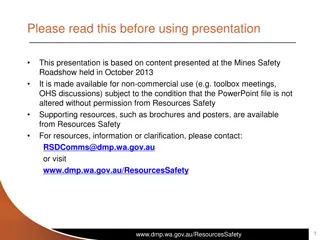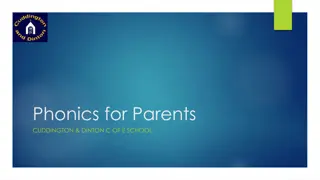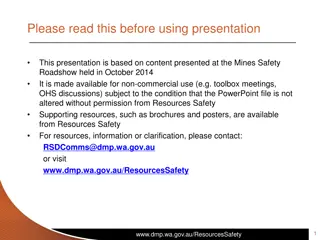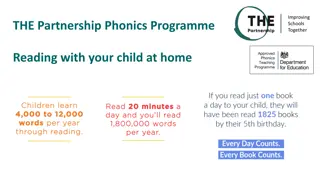Effective Phonics Teaching Strategies for Primary School Educators
Implementing best practices in phonics education is crucial for enhancing student learning outcomes. This guide covers organizing teaching sessions, monitoring progress, training resources, demonstration activities in Year 1, and word sections for comprehensive phonics instruction. Key tips include structuring lessons, using formative and summative assessments, training teachers & TAs, and engaging students with interactive activities and resources. By following these strategies, educators can create a stimulating phonics learning environment that fosters student success.
Download Presentation

Please find below an Image/Link to download the presentation.
The content on the website is provided AS IS for your information and personal use only. It may not be sold, licensed, or shared on other websites without obtaining consent from the author.If you encounter any issues during the download, it is possible that the publisher has removed the file from their server.
You are allowed to download the files provided on this website for personal or commercial use, subject to the condition that they are used lawfully. All files are the property of their respective owners.
The content on the website is provided AS IS for your information and personal use only. It may not be sold, licensed, or shared on other websites without obtaining consent from the author.
E N D
Presentation Transcript
Phonics Best Practice
Organising each taught session to cover essential elements; Revise, Teach, Practice, Apply + (Assess) A Week s Discrete Phonics Teaching Phase:___ Weekly objectives: Monday Tuesday Wednesday Thursday Friday L.O L.O L.O L.O L.O Revisit and Review Teach Practise Apply Assessment
Monitoring learning and assessment of progress Regular summative assessment - to inform medium term planning at the start and end of every Half-term Ongoing formative assessment - of learning in every lesson, to inform next day planning. Review progress at the end of each week to plan future teaching. Planning Don t save the hardest until last Secure ure! How I changed the way I planned for progression? Pace, Overlearning and Staying Together! Year 1 Phase 5 by Christmas, then Revisit and Revise Year 2 Target children
Training TAs and teachers new to the school Subject Knowledge Terminology Key Strategies Correct pronunciation of sounds Oxford Reading Tree https://www.oxfordowl.co.uk/for-home/reading-owl/expert-help/the-year-1- phonics-screening-check/ Letters and Sounds https://www.youtube.com/watch?v=BqhXUW_v-1s Jolly Phonics https://www.youtube.com/watch?v=-ksblMiliA8 Read, Write, Inc. https://www.youtube.com/watch?v=5J2Ddf_0Om8&t=8s
Demonstration of teaching in Year 1 Buried Treasure Quiz, Quiz, swap Pass the Parcel Phonics Swat Pick up prizes What s in the Box? Cross the Golden river Rock, paper, scissors What sound Mr Wolf? Hangman Physical demonstrations vowel digraphs, split digraphs, segmenting and blending Mini- whiteboards Whisper talk Phonics fingers, Robot Arms Resources from schemes have their place, but don t over-rely!
Section 1 (20 words) lig mep gax emp (simple cvc or vcc words) beff shup doil charb (cvc vowel digraphs0 frex criff haps barst (consonant clusters) chin deck horn queen tram press self keeps (consonant cluster + tense) Section 2 (20 words) jigh woats rird phope (trigraph and split digraph) glips floost splam stribe (longer consonant clusters and spilt digraphs) stair haunt lied wove drank treats scram stroke arrow forest wishing brighter (polysyllabic and best bet words)
Improvements in Phonics check and KS1 reading results Does your long-term planning include all the elements of the test? Consonant clusters, split digraphs, polysyllabic words, pseudo words and past tense verbs - as well as Phase 5 phonemes? Daily (even in Year 2) carefully planned, fast paced, 4 part lessons Delivered by a teacher, supported by TAs (keep it in the classroom, where you can oversee!) Planned opportunities for over-learning Key strategies taught regularly Planned preparation for the test in Year 1 and 2 Phonics everywhere go sound button crazy! Getting parents on board Resources Reading Schemes Cross-curricular links and links to SPaG, Handwriting and Guided Reading
Targeting under-performing groups Summer born boys (7% gap in 2016) SEND Dyslexia Working Memory Autistic Spectrum Glue Ear/Grommets EAL (Roma/Traveller) FSM Strategies include Teacher led, Overlearning, Pre-teaching, Kinaesthetic activities that combine oral, physical and aural approaches, Linking phonics to fine-motor skills, Bumping into Phonics, Sound Buttons everywhere, Reading books and all reading matter at relevant phases, Practice materials and strategies, Teaching linked to interests. Will your scheme match their needs?
